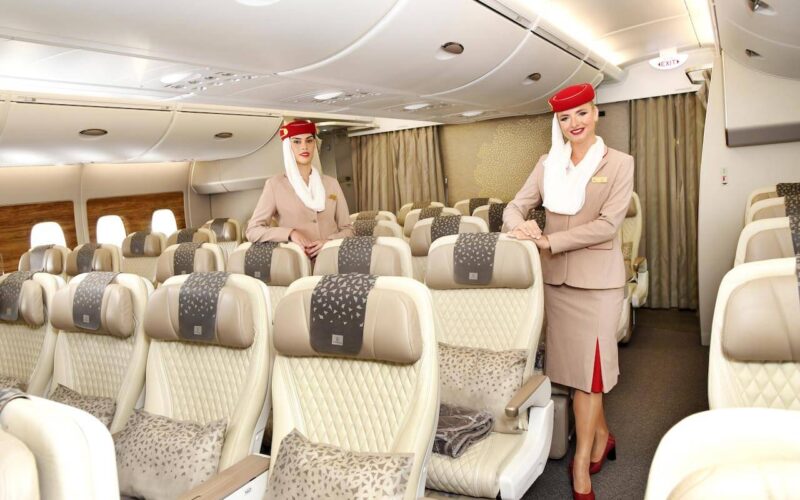Although a concept that many people still regard as relatively ‘new’ in terms of passenger air travel, the phenomenon of premium economy has actually been with us for over thirty years. In this article, AeroTime examines the origins of premium economy cabins, how the concept came about, who the early adopters were, how offering premium economy works for airlines, and how it has flourished into the enormous success story it is today.
Premium economy – how it all began
During the 1970s, airlines typically offered either just a single class of travel or in some cases (particularly US domestic and long-haul travel), a two-class cabin featuring a first-class section and an economy (or ‘coach’) cabin for those who were traveling on a tighter budget. There was almost no adoption of any intermediate classes of service onboard passenger aircraft, with most carriers making do with this two-class arrangement.
This status quo started to change in the late 1970s. Australian carrier Qantas, which was transitioning to become an all-Boeing 747 operator at the time, identified the scope for a third intermediate class of service. The enhanced offering was aimed at those long-haul flyers who desired more comfort onboard but whose budgets would not stretch to the full first class airfare.
The new cabin concept was termed ‘business class,’ and other airlines soon followed the lead set by Qantas. British Airways, TWA, and Pan Am emulated the idea on their own fleets soon afterward. It was not long before almost all major long-haul airlines featured a business class cabin, recognizing the need to keep up with the market while fearing lost revenue to their competitors should they fail to do so.
The introduction of premium economy came around in a comparable way to that of business class. Identifying a market whereby a certain number of economy passengers were willing to pay a little extra for additional comfort on long-haul flights but were either unwilling or unable to pay for a full business class airfare, airlines began revisiting the classes of service they offered onboard their flights in the early 1990s.
In 1991, the Taiwanese carrier EVA Air introduced a revolutionary new class of travel onboard its Boeing 747-400 fleet. The new service was initially branded as ‘Evergreen Class,’ before later adopting a more descriptive name – premium economy.
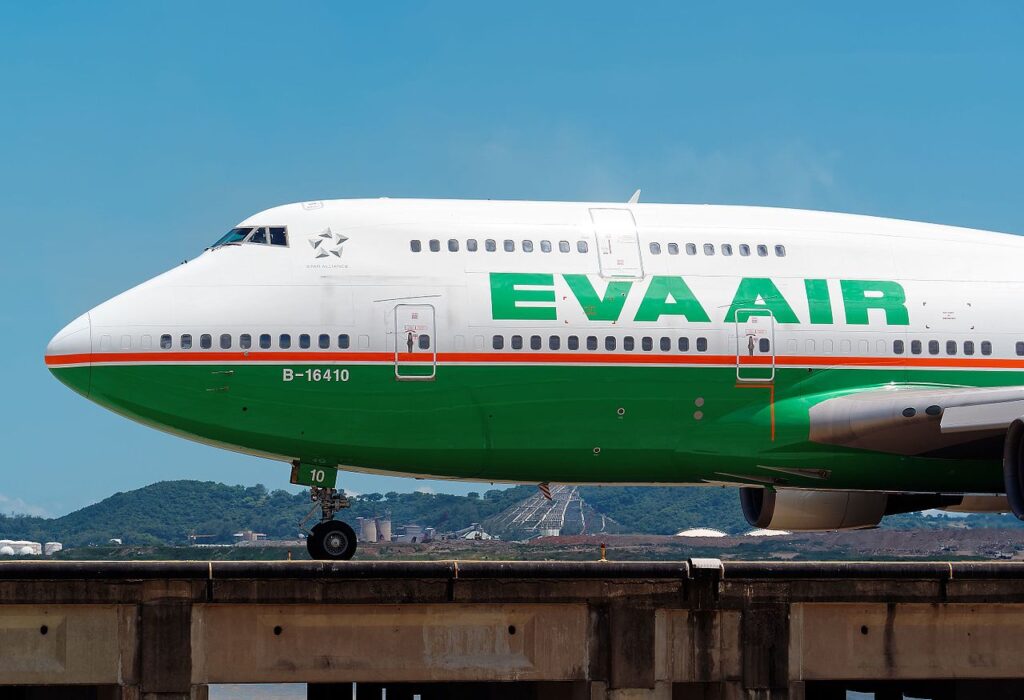
This innovation featured an exclusive cabin located in the nose section of the aircraft, situated in front of EVA’s standard economy class cabin. Rather than the standard 3-4-3 seating layout of economy class, the new cabin offered wider seats with more legroom in a 2-2-2 layout (allowing for the narrowing of the forward fuselage). While the onboard service was common to both cabins on the main deck of the 747s, passengers traveling in the enhanced economy cabin were afforded much more room in their exclusive area.
The introduction of an enhanced economy class product quickly caught the attention of other airlines around the world. The next major airline to adopt the model was Virgin Atlantic in the UK.
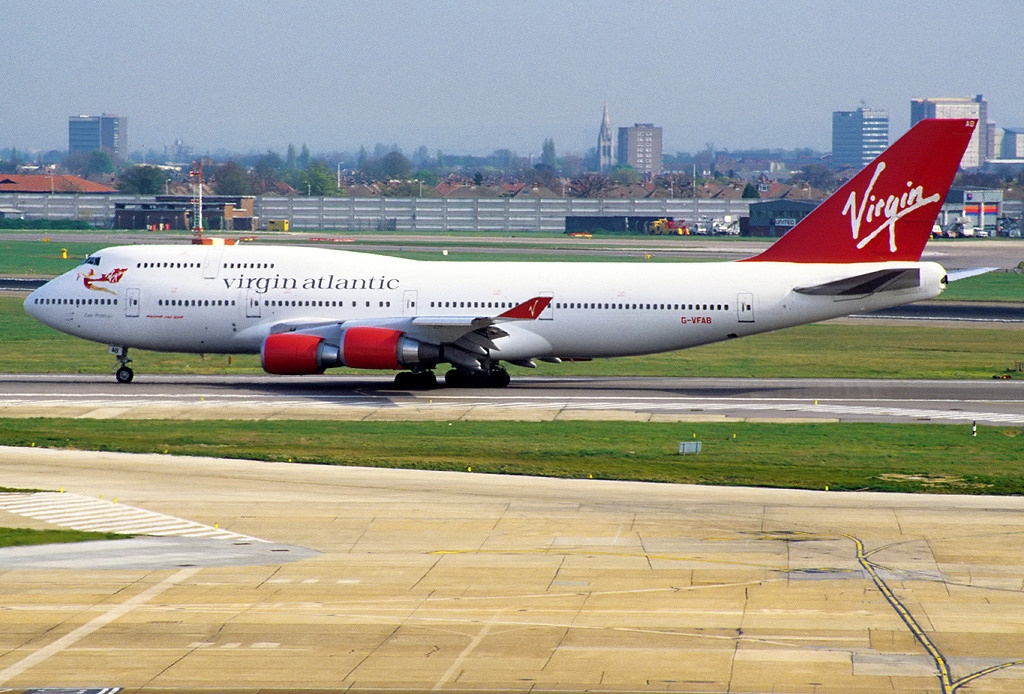
Initially branded by the carrier as ‘Mid Class’ and pitched between its ‘Upper Class’ business class product and economy class, Mid Class (which was subsequently rebranded by the airline as ‘Premium Economy’ in 1994) offered larger seats in a separate cabin on the carrier’s 747s but maintained the same meal service as its economy cabin. Passengers booked to travel in Mid Class were also offered separate check-in desks at the airport, plus a welcome drink after boarding.
Adoption of the premium economy model
Having sat back and watched as Virgin Atlantic and EVA attracted more passengers paying good money for an enhanced economy experience, US airlines began adopting a slightly different model albeit based on the same concept. TWA was the first to add more legroom for all passengers traveling in the economy (or ‘coach’) class cabins on its flights. Branded as ‘Comfort Class,’ the product did not offer separate cabins or enhanced meal services but did allow a couple of extra inches of legroom for economy passengers.
Delta Air Lines, American Airlines, and United Airlines followed this trend in the early noughties, either by increasing seat pitches across the whole economy cabin or just in certain rows, often the first few in the economy cabin. However, with the US traveling public being sensitive to ticket prices and with the US market being highly competitive, they had limited success with their hybrid cabin layouts as passengers tended to head towards the cheapest fare when booking.
It was not until many years later that the US majors adopted entirely separate cabins and, in some cases, enhanced onboard services that premium economy took off among the US legacy carriers. American Airlines was the first to introduce a true premium economy class product and make it available across its long-haul fleet by 2016, providing more premium economy capacity than any other US airline.
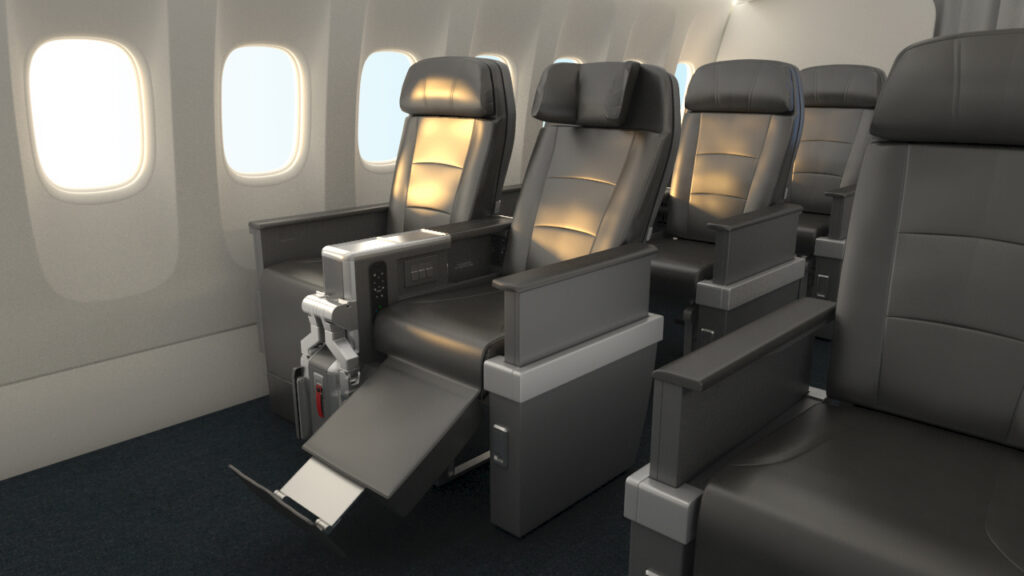
In more recent times, increasing numbers of airlines have adopted premium economy cabins on their aircraft. British Airways introduced its ‘World Traveller Plus’ in 2000, while other airlines have begun offering enhanced economy services as new aircraft types began to be delivered over the last two decades. Nowadays, it is becoming increasingly hard to find a major airline flying international routes that does not offer a class of service pitched between its economy and business classes.
Indeed, as more airlines adopt the model and the competition for premium economy passengers increases, carriers are now locked in a battle to see which can offer the best version of premium economy in the market. Design innovations, increasingly elaborate seat designs and tweaks to onboard menus have all become part of that battle, with the bar being continually raised by every new entrant coming into the market.
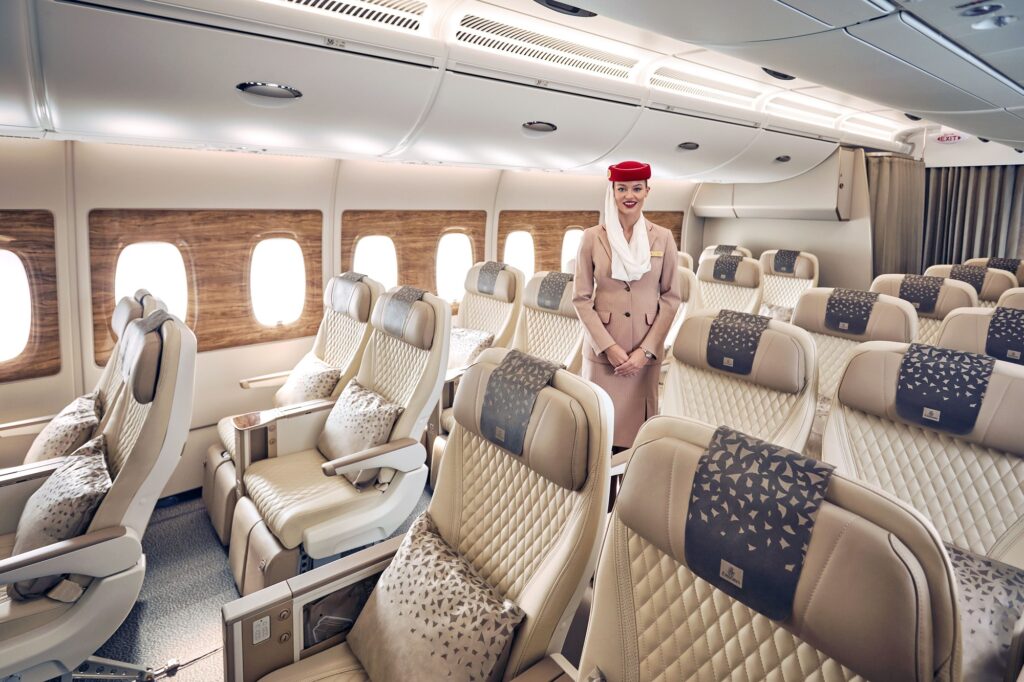
Late to the premium economy party, but already enjoying the spoils that are on offer to airlines from economy class passengers willing to pay higher fares for a bit more room onboard is Emirates. The Dubai-based megacarrier only introduced premium economy on its Airbus A380s and Boeing 777-300ER fleets in 2022. However, the product has been phenomenally successful so far, according to the airline, and the rollout of premium economy continues across its fleet as quickly as supply chains and individual aircraft maintenance schedules will allow.
Lufthansa is also another latecomer, although it will begin offering premium economy on certain long-haul routes in 2024 following the unveiling of its premium economy ‘Allegris product in 2023.
What does premium economy typically offer?
Although it is hard to generalize as every airline’s premium economy product differs, there are two key elements to any premium economy product – seating and service.
In terms of seating, most airlines’ premium economy seating will offer benefits such as additional legroom (commonly around 38 inches of pitch versus 31-32 inches in economy), wider seats, additional recline angle, more maneuverable seat-back tables and leg rests, larger entertainment screens and power/USB sockets.
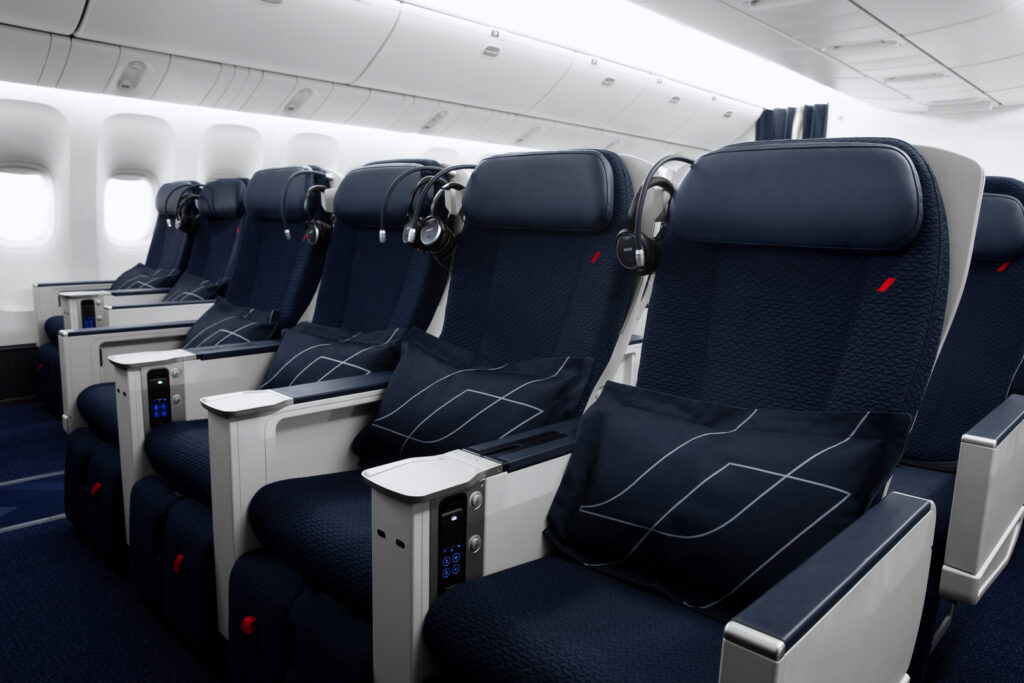
In terms of service, premium economy generally offers an enhanced airport experience and improved inflight service as well. While not on a level to business class (as airport lounge access and premium quality menus are not included), the experience can include additional checked baggage allowance, dedicated check-in facilities, priority (“fast track”) security screening and boarding, and enhanced food and beverage offerings onboard.
Why does premium economy work for airlines?
As any airline accountant or those with a keen eye for airline economics will tell you, the key to having an effective pricing strategy is ensuring that your company offers the right product for each of the market segments in which you aim to attract customers. This is not a policy limited to new startup carriers, but one that all airlines should monitor and revisit regularly.
While airlines historically offered just one or perhaps two classes of service, as carriers began to invest more time and money in understanding the requirements and desires of their passengers, the product offering changed. Similarly, as commercial passenger aircraft have become larger and more advanced, the opportunities open to airlines to enhance their onboard offerings have increased.
While airfares have traditionally remained high in the first and business class arenas over the years, economy class airfares have remained stubbornly low as competition increased. However, as market segmentation has increased and travelers have become savvier and more in tune with their needs and requirements, airlines have rushed to adapt to meet those changes in behavior by adapting their product models.
The aim for any operator, whether it is a commuter airline operating small turboprop aircraft on regional routes to a large flag carrier flying widebodies on intercontinental services, the objective will always remain the same regardless. That is, to sell as many seats as you can on every flight while maximizing revenue from those seats sold while keeping costs down as low as possible.
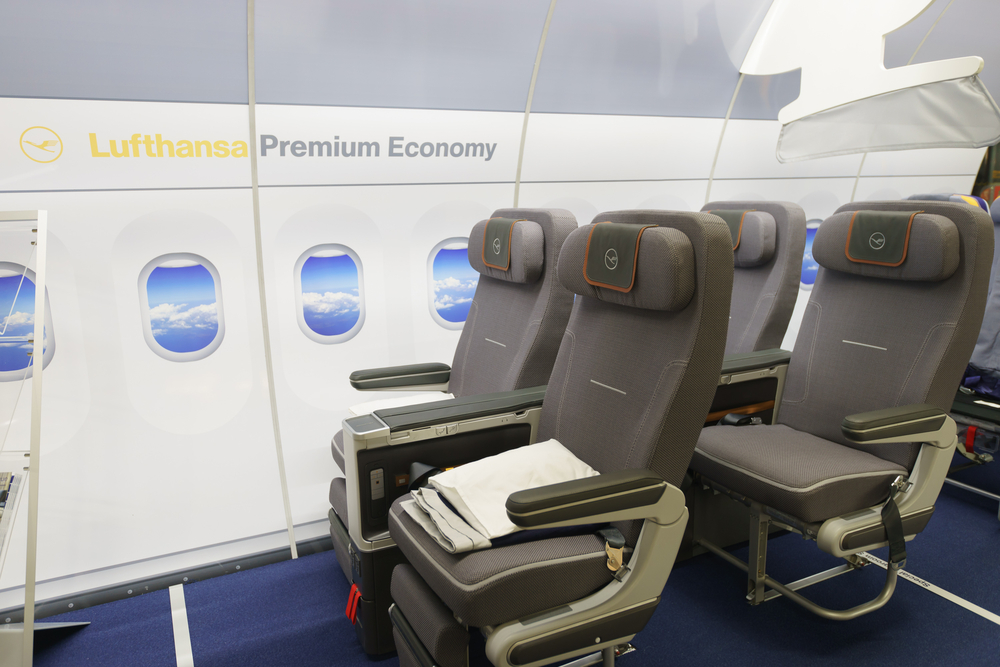
The first two elements of this theory can only be achieved if you are offering what the traveling public wants at a price they are willing to pay for it. Therefore, airlines must regularly monitor their products so that both load factors and yields are maximized continuously.
Recent years offer unambiguous evidence of airlines monitoring their onboard offerings and making changes to meet the demands of their customers. The adoption of premium economy was a key part of this strategy. Similarly, the apparent fall from grace of first class sections on airlines has been a result of carriers meeting shifts in customer demands and expectations.
With the enormous evolution of business class products over the last decade including privacy screens and lie flat beds, the market for those willing to pay for a first class fare has fallen sharply. In response, carriers have been either reducing or eliminating first class cabins entirely – once the bastion of high-class travel but now a revenue drain that many airlines can ill-afford. Particularly, when they could use the valuable real estate taken up by empty first-class cabins for business-class cabins boasting high load factors.
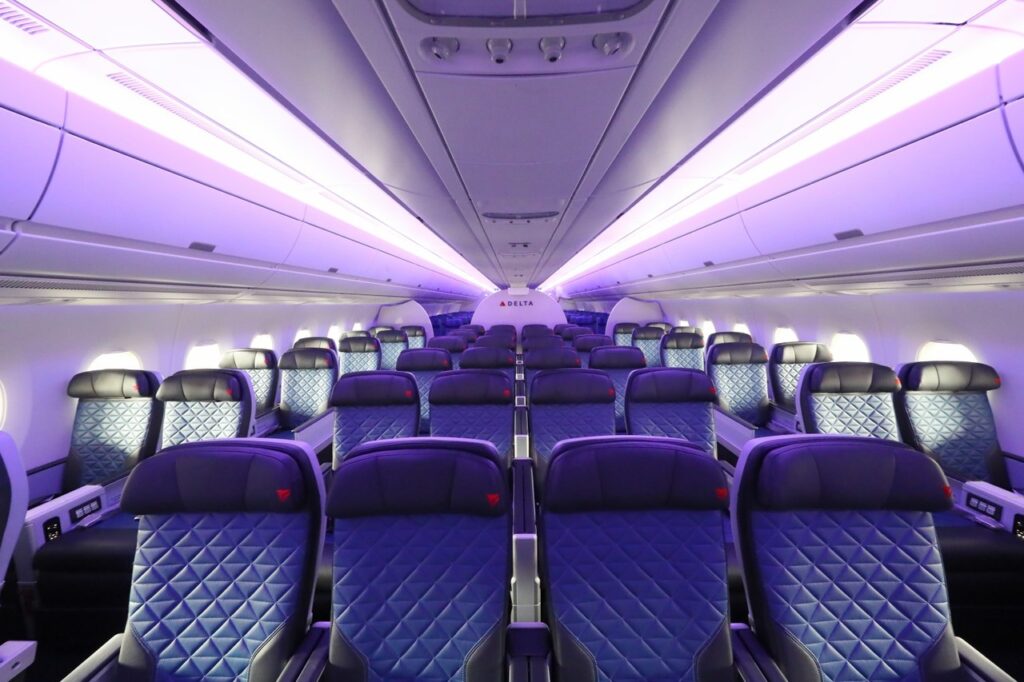
The same argument applies to premium economy and explains its rapid growth in popularity between airlines and passengers alike. If an airline sees demand for a class of travel from individuals who will pay a supplement for a bit more space in a dedicated cabin that in some ways gives them a sense of exclusively, then why not offer it? Airlines have increasingly recognized that it is better to invest in premium economy cabins rather than see the same customers vote with their feet and fly on your competitors.
As more airlines have switched on to this, the prevalence of premium economy has increased globally, and the number of airlines rolling out cabins pitched between business and economy shows no sign of abating any time soon. After all, no airline has adopted and invested in a premium economy cabin and then reversed that decision and removed it. This alone says so much about how appealing the product can be.
The future of premium economy
With advancing technology in passenger cabin design, there are likely to be further improvements in premium economy products offered by airlines in the future. From seating design to tweaks to onboard menus, and from inflight connectivity (including free Wi-Fi) to additional amenities such as onboard lounge space and help-yourself snack bars, there is still some room for airlines to improve on what is already offered in the premium economy arena.
All that said, given that premium economy as a concept was only devised just over thirty years ago, the stellar growth in its popularity amongst long-haul travelers in particular, makes the premium economy concept a real success story of the 21st-century airline industry.
With the advancements made by airlines in both their business and economy class cabins in recent years, it would not be unrealistic to expect the premium economy experience to continue to improve and develop in the future, as airlines take the opportunity to meet passengers’ demands and exceed expectations, while simultaneously improving their bottom lines.

